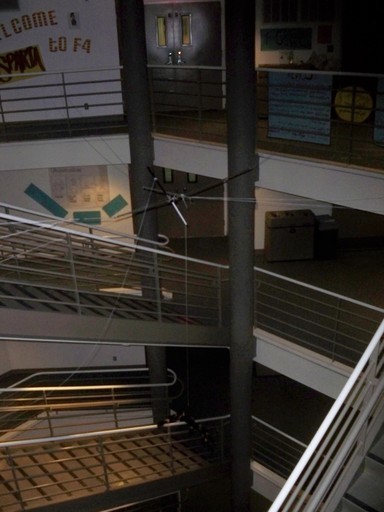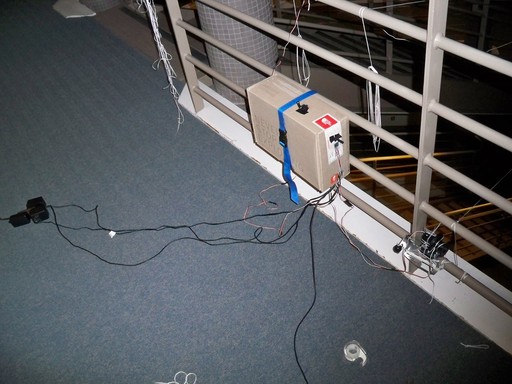
{ [ ] Projects >>> [Hardware] - [Software] - [Class] - [Other] - [Failed] -|!|!|- [Resources] - [Biography] - [Contact] - [ ] }
Halloween Spider Drop
| Note: the text below is in response to a Halloween contest that the
project was going to be in a submission in. This project was made in
October 2008, and the original thread can be found here. Well, I tried. Unfortunately, it wasn't strong enough. My idea for OBCs contest was to have a human controlled spider thread with a spider hanging on the end. I live in a dormatory, and we have a central area four stories tall (~40 feet) with stairs on either side and a central light shaft in the middle. The project design was to have a person wave their hands in front of some IR devices, and that would control the vertical movement of the spider, and how much it swings. This way, the spider has a full 2d plane of movement. Also, a special scenaro (when a hand got really close to the vertical sensor) would drop the spider suddenly. As for safety, I took several precautions. Truth be told, I didn't really get any sort of approval for this project, and it looked a bit dubious with the liberal use of zipties. So, I took safety serious. All components out in the air are very light, with gently rounded corners so that they are fairly safe if it should fall. Next, I put lots of sting out to the center. There are seven completely independent sets of tie downs: two along the x axis, two along the z axis, one tied to the cross point, one tied to the servo counter balance, and the spider thread. Each of this were securely tied with a half hitch and a square knot to various railings. Attachments (Right click and "Save Link As...") TestIrDutyDistanceDetector.spin |
(c)2010 Cody Lewis
lewisc@cs.ucr.edu

